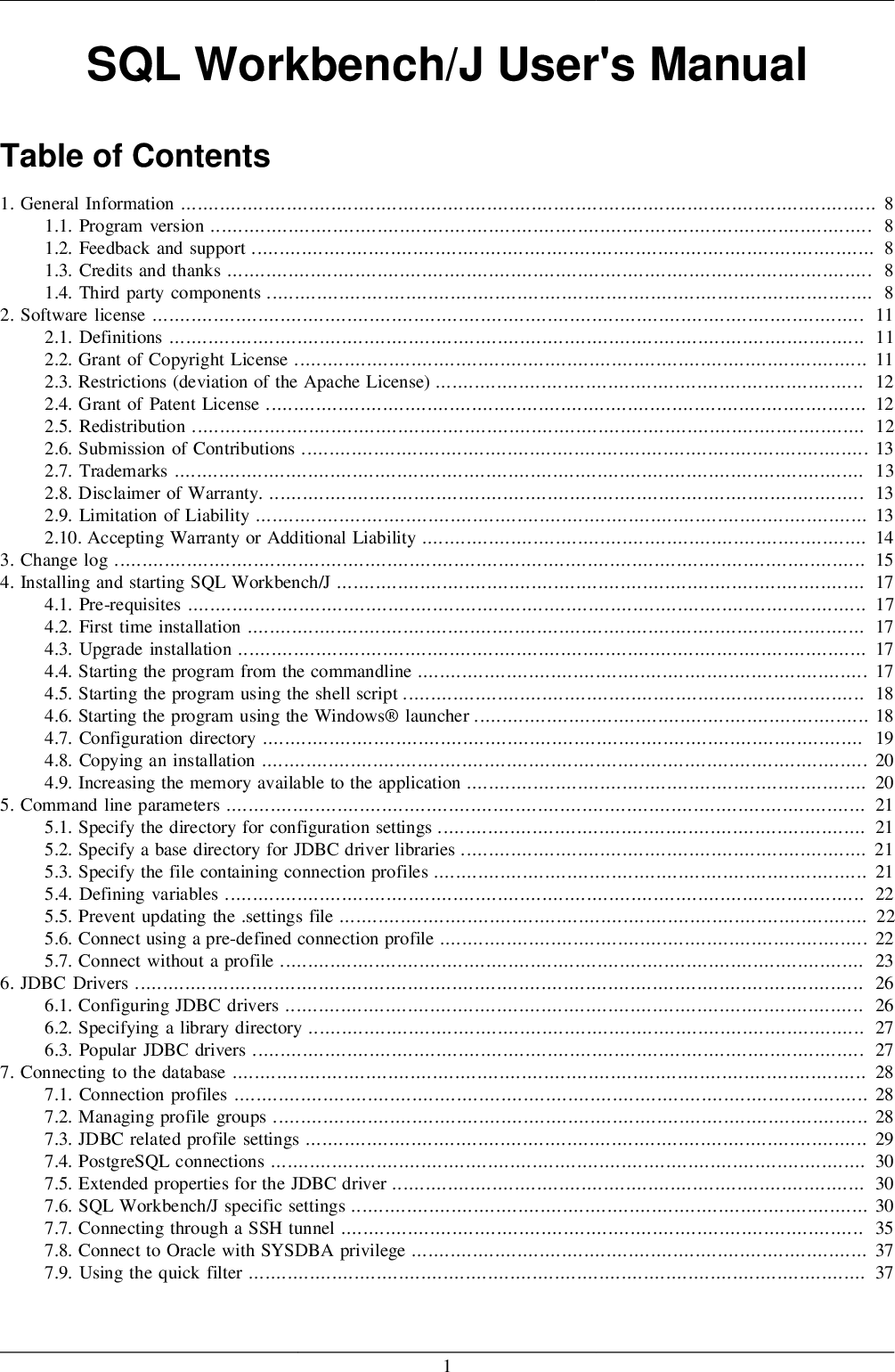We can group the resultset in SQL on multiple column values. All the column values defined as grouping criteria should match with other records column values to group them to a single record. Let us use the aggregate functions in the group by clause with multiple columns. This means given for the expert named Payal, two different records will be retrieved as there are two different values for session count in the table educba_learning that are 750 and 950. The group by clause is most often used along with the aggregate functions like MAX(), MIN(), COUNT(), SUM(), etc to get the summarized data from the table or multiple tables joined together.
Grouping on multiple columns is most often used for generating queries for reports, dashboarding, etc. Group by is done for clubbing together the records that have the same values for the criteria that are defined for grouping. When a single column is considered for grouping then the records containing the same value for that column on which criteria are defined are grouped into a single record for the resultset. And finally, we will also see how to do group and aggregate on multiple columns.
In this example, the columns product_id, p.name, and p.price must be in the GROUP BY clause since they are referenced in the query select list. For each product, the query returns a summary row about all sales of the product. The GROUP BY clause is a SQL command that is used to group rows that have the same values. The GROUP BY clause is used in the SELECT statement.
Optionally it is used in conjunction with aggregate functions to produce summary reports from the database. To be perfectly honest, whenever I have to use Group By in a query, I'm tempted to return back to raw SQL. I find the SQL syntax terser, and more readable than the LINQ syntax with having to explicitly define the groupings. In an example like those above, it's not too bad keeping everything in the query straight. However, once I start to add in more complex features, like table joins, ordering, a bunch of conditionals, and maybe even a few other things, I typically find SQL easier to reason about. Once I get to the point where I'm using LINQ to group by multiple columns, my instinct is to back out of LINQ altogether.
However, I recognize that this is just my personal opinion. If you're struggling with grouping by multiple columns, just remember that you need to group by an anonymous object. Table functions are functions that produce a set of rows, made up of either base data types or composite data types . They are used like a table, view, or subquery in the FROM clause of a query.
Columns returned by table functions can be included in SELECT, JOIN, or WHEREclauses in the same manner as a table, view, or subquery column. The SELECT statement used in the GROUP BY clause can only be used contain column names, aggregate functions, constants and expressions. Pandas comes with a whole host of sql-like aggregation functions you can apply when grouping on one or more columns. This is Python's closest equivalent to dplyr's group_by + summarise logic.
Here's a quick example of how to group on one or multiple columns and summarise data with aggregation functions using Pandas. The GROUP BY statement is often used with aggregate functions (COUNT(),MAX(),MIN(), SUM(),AVG()) to group the result-set by one or more columns. If the aggregate query does not have a group by clause ther is only one group of rows. However, MySQL enables users to group data not only with a singular column for consideration but also with multiple columns.
We will explore this technique in the latter section of this tutorial. We can observe that for the expert named Payal two records are fetched with session count as 1500 and 950 respectively. Similar work applies to other experts and records too. Note that the aggregate functions are used mostly for numeric valued columns when group by clause is used. If a table function returns a base data type, the single result column is named like the function.
If the function returns a composite type, the result columns get the same names as the individual attributes of the type. It will have one rows for each combination of grouping variables; if there are no grouping variables, the output will have a single row summarising all observations in the input. It will contain one column for each grouping variable and one column for each of the summary statistics that you have specified. The GROUP BY clause divides the rows returned from the SELECTstatement into groups. For each group, you can apply an aggregate function e.g.,SUM() to calculate the sum of items or COUNT()to get the number of items in the groups.
When I was first learning MVC, I was coming from a background where I used raw SQL queries exclusively in my work flow. One of the particularly difficult stumbling blocks I had in translating the SQL in my head to LINQ was the Group By statement. What I'd like to do now is to share what I've learned about Group By , especially using LINQ to Group By multiple columns, which seems to give some people a lot of trouble.
We'll walk through what LINQ is, and follow up with multiple examples of how to use Group By. If you've used ASP.NET MVC for any amount of time, you've already encountered LINQ in the form of Entity Framework. EF uses LINQ syntax when you send queries to the database. While most of the basic database calls in Entity Framework are straightforward, there are some parts of LINQ syntax that are more confusing, like LINQ Group By multiple columns. Criteriacolumn1 , criteriacolumn2,…,criteriacolumnj – These are the columns that will be considered as the criteria to create the groups in the MYSQL query. There can be single or multiple column names on which the criteria need to be applied.
We can even mention expressions as the grouping criteria. SQL does not allow using the alias as the grouping criteria in the GROUP BY clause. Note that multiple criteria of grouping should be mentioned in a comma-separated format. Aggregate_function – These are the aggregate functions defined on the columns of target_table that needs to be retrieved from the SELECT query.
In the example above, the WHEREclause is selecting rows by a column that is not grouped , while the HAVING clause restricts the output to groups with total gross sales over 5000. Note that the aggregate expressions do not necessarily need to be the same in all parts of the query. Rows that do not meet the search condition of the WHERE clause are eliminated from fdt. Notice the use of scalar subqueries as value expressions.
Just like any other query, the subqueries can employ complex table expressions. Notice also how fdt is referenced in the subqueries. Qualifying c1 as fdt.c1 is only necessary if c1 is also the name of a column in the derived input table of the subquery.
But qualifying the column name adds clarity even when it is not needed. This example shows how the column naming scope of an outer query extends into its inner queries. However, the reference produces only the columns that appear in the named table — any columns added in subtables are ignored. If you want to break your output into smaller groups, if you specify multiple column names or expressions in the GROUP BY clause. Output in each group must satisfy a specific combination of the expressions listed in the GROUP BY clause.
The more columns or expressions entered in the GROUP BY clause, the smaller the groups will be. This is when a function is applied to a column after a groupby and the resulting column is appended back to the dataframe. Often you may want to group and aggregate by multiple columns of a pandas DataFrame.
Fortunately this is easy to do using the pandas.groupby()and.agg()functions. The describe() output varies depending on whether you apply it to a numeric or character column. Similarly, we can run group by and aggregate on tow or more columns for other aggregate functions, please refer below source code for example.
Similar to SQL GROUP BY clause, PySpark groupBy() function is used to collect the identical data into groups on DataFrame and perform aggregate functions on the grouped data. In this article, I will explain several groupBy() examples using PySpark . Basically, for grouping particular column values mentioned with the group by query, Group by clause use columns on Hive tables. However, column name does not matter, since for whatever the name we are defining a Group By query will selects and display results by grouping the particular column values. Pivoting is used to rotate the data from one column into multiple columns. More total amount exported to each country of each product will do group by Product, pivot by Country, and the sum of Amount.
Spark SQL doesn't have unpivot function hence will use the stack() function. We can use HAVING clause to place conditions to decide which group will be the part of final result-set. Also we can not use the aggregate functions like SUM(), COUNT() etc. with WHERE clause. So we have to use HAVING clause if we want to use any of these functions in the conditions. After the processing of the FROMclause is done, each row of the derived virtual table is checked against the search condition. If the result of the condition is true, the row is kept in the output table, otherwise it is discarded.
The search condition typically references at least some column of the table generated in the FROM clause; this is not required, but otherwise the WHERE clause will be fairly useless. In the previous episode, we have seen the keyword WHERE, allowing to filter the results according to some criteria. SQL offers a mechanism to filter the results based on aggregate functions, through the HAVING keyword. In this article, I share a technique for computing ad-hoc aggregations that can involve multiple columns.
This technique is easy to use and adapt for your needs, and results in code that's straight forward to interpret. In this tutorial, you have learned you how to use the PostgreSQL GROUP BY clause to divide rows into groups and apply an aggregate function to each group. In this example, the GROUP BY clause divides the rows in the payment table by the values in the customer_id and staff_id columns. For each group of , the SUM() calculates the total amount. You can use the GROUP BYclause without applying an aggregate function.
The following query gets data from the payment table and groups the result by customer id. When multiple statistics are calculated on columns, the resulting dataframe will have a multi-index set on the column axis. The multi-index can be difficult to work with, and I typically have to rename columns after a groupby operation. I have a problem with group by, I want to select multiple columns but group by only one column. The query below is what I tried, but it gave me an error.
UNION allows you to stack one dataset on top of another dataset. This is followed by the application of summarize() function, which is used to generate summary statistics over the applied column. The new column can be assigned any of the aggregate methods like mean(), sum(), etc. Let us first look at a simpler approach, and apply groupby to only one column. The MySQL GROUP BY command is a technique by which we can club records together with identical values based on particular criteria defined for the purpose of grouping.
When we try to group data considering only a single column, all the records that possess the same values on which the criteria is defined are coupled together in a single output. It's simple to extend this to work with multiple grouping variables. Say you want to summarise player age by team AND position. You can do this by passing a list of column names to groupby instead of a single string value.
In this tutorial, we have shown you how to use the GROUP BY clause to summarize rows into groups and apply the aggregate function to each group. Extends this to also allow GROUP BY to group by columns in the select list. Grouping by value expressions instead of simple column names is also allowed. Then, for each row in T1 that does not satisfy the join condition with any row in T2, a joined row is added with null values in columns of T2.
Thus, the joined table unconditionally has at least one row for each row in T1. The optional WHERE, GROUP BY, and HAVINGclauses in the table expression specify a pipeline of successive transformations performed on the table derived in the FROM clause. All these transformations produce a virtual table that provides the rows that are passed to the select list to compute the output rows of the query. Yes, it is possible to use MySQL GROUP BY clause with multiple columns just as we can use MySQL DISTINCT clause.
Consider the following example in which we have used DISTINCT clause in first query and GROUP BY clause in the second query, on 'fname' and 'Lname' columns of the table named 'testing'. The HAVING keyword works exactly like the WHERE keyword, but uses aggregate functions instead of database fields to filter. Filter and order results of a query based on aggregate functions. Notice that each group row has aggregated values which are explained in a documentation page of their own. When the group is closed, the group row shows the aggregated result.
When the group is open, the group row is removed and in its place the child rows are displayed. To allow closing the group again, the group column knows to display the parent group in the group column only . The GROUP BY clause divides the rows in the payment into groups and groups them by value in the staff_id column. For each group, it returns the number of rows by using the COUNT() function.
The statement clause divides the rows by the values of the columns specified in the GROUP BY clause and calculates a value for each group. First, select the columns that you want to group e.g., column1 and column2, and column that you want to apply an aggregate function . I'm trying to select multiple columns and Group By ProductID while having SUM of OrderQuantity.
What we've done is to create groups out of the authors, which has the effect of getting rid of duplicate data. I mention this, even though you might know it already, because of the conceptual difference between SQL and LINQ. I think that, in my own head, I always thought of GROUP BY as the "magical get rid of the duplicate rows" command. What I slowly forgot, over time, was the first part of the definition. We're actually creating groups out of the author names.

























No comments:
Post a Comment
Note: Only a member of this blog may post a comment.